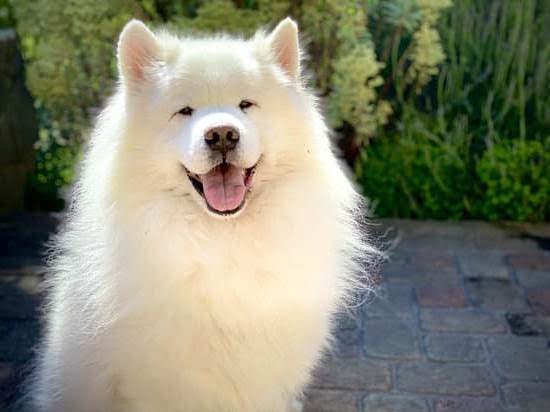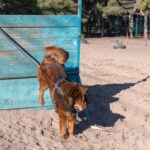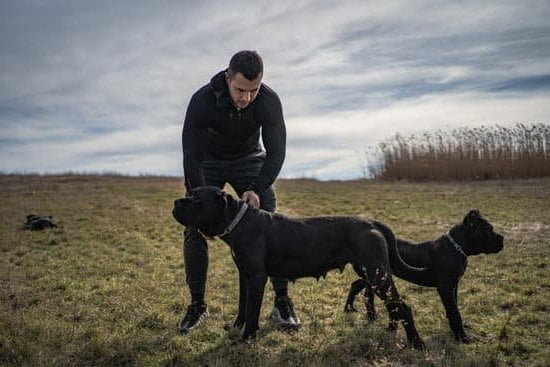Introduction
Training your dog to use a leash is an important part of successful pet ownership. By teaching your dog how to comfortably walk on a leash you are preparing them for safe outings and providing them with opportunities for physical exercise, mental stimulation, and social interaction. Not only that, but it also helps ensure that your pet is kept out of harm’s way; Leashed dogs are far less likely to jump into traffic or run off and become lost.
To effectively train your dog to use a leash, follow these steps:
1. Start indoors – Before walking outdoors on a leash, it’s best to start training indoors in an area without distractions. Attach the leash and let your pup get used to wearing it at their own pace by allowing them to roam around freely while dragging the leash behind them. When they attempt to investigate an object or move in a particular direction, gently maneuver the leash away from what interests them until they look up at you for guidance (this will help create loose-leash walking behavior in the future).
2. Practice makes perfect – Through consistent repetition and reinforcement (with rewards), as well as conditioning (such as clicking/treating whenever they switch direction), you can teach your pup how to heel (walk directly beside you) at different speeds. To make sure they understand their new cues, practice regularly on both sides of the street so they don’t become unbalanced or confused when transitioning between walking familiar and unfamiliar territory.
3. Know when enough is enough – Keep in mind that just like humans, dogs need regular rest breaks throughout their walks; This allows them time to check out interesting smells and explore their surroundings without being restrained by a leash or pulled by their handler every step of the way. After each break reward them with praise or treats (or both!).
Overall, training your dog to be comfortable walking on a leash can take some time and effort, but once successful it can provide huge benefits including improved safety concerns along with increased physical activity levels & quality bonding experiences between you & your pup!
Equipment Needed for Leash Training
When training a dog to use a leash, there are several items that need to be acquired beforehand. Most importantly, one will need the appropriate leash and collar or harness for the specific breed of dog. The harness should be firmly fitted on the dog so that it can not slip out of the collar or otherwise become misaligned. Additionally, treats can be instrumental during the training process as they often act as motivational rewards. A clicker is also recommended in order to provide a distinct auditory cue whenever a desired behavior is exhibited. Finally, long-lasting chews or toys may also prove helpful in some cases when positive reinforcement and distraction techniques are necessary. Ultimately, having these items on-hand will ensure an effective training session goes according to plan.
Getting Your Dog Ready for Leash Training
Before you begin leash training your pup, it’s important to ensure that they are comfortable and familiar with the process. To do this, start by introducing them to the leash itself at home. Allow your pet to get used to the feel and presence of the leash by letting them sniff and explore it in a safe environment. You could even use treats and positive reinforcement as rewards for touching or being near the object to increase their familiarity with it. After a few days, attach one end of the leash onto your pup’s collar while still keeping them at home. The goal here is to get them used to having something around their neck while moving around inside your house. As soon as they seem comfortable with the feeling of having a leash on, you can begin taking them out for walks!
Introducing Your Dog to the Leash
It’s important to start leash training your dog as soon as possible. Before introducing the leash, it’s best to make your dog comfortable with the idea by playing fun games or rewarding them with treats. Each time you bring out the leash, give plenty of positive reinforcement. Make sure to keep each session brief; if your pup seems scared or overwhelmed, let him take a break before trying again. Once he’s comfortable around the leash and collar, go on short walks in quiet areas without much distraction. Keep one hand on the leash at all times and attempt to stay calm throughout. Siunce dogs feed off their owners energy, being relaxed can make all the difference during leash training sessions. When you feel like your pup is doing well enough, venture into more crowded spaces so they can get used to crowds and noises. Slowly increase distance and speed when walking until your dog is confidently walking next to you like a pro!
Teaching Your Dog to Walk
The first step in training your dog to use a leash is to introduce them to the idea by using positive reinforcement. This can be achieved by allowing your dog time to get comfortable with the leash, something as simple as leaving it in its vicinity or clipping it on and then immediately rewarding your pup with treats or affection when they approach it without feeling intimidated. Eventually, you will want to start attaching the leash for shorter periods of time. It is best to start inside the home, so that your pup does not feel overwhelmed with too many distractions like cars or other dogs outside making them more likely to dash off. Begin by allowing them to walk around the house freely while wearing the leash and reward them anytime they hold it slackly. After progression is made indoors, you can begin gradually extending these short walks outside while continuing rewards along the way until you are able to walk regularly with no pulling or tugging of the leash. If at any point during training, there is any progressions backwards or agitation from your pup, this indicates that you should reduce the length of the walk and return back into smaller increments of comfortability in order for a smoother journey moving forward.
Teaching Your Dog to Sit and Stay On-Leash
Training your dog to use a leash properly is an important part of having a good relationship with your pup. It may seem challenging in the beginning, but with the right tools and methods, teaching your dog to sit and stay on a leash will become second nature rather quickly.
One of the most effective methods includes rewarding your dog with treats while they are obeying commands like “sit” or “stay”. Give them verbal praise when they follow instructions, as this will encourage them to continue doing so in the future. Start practice sessions in an enclosed space like a backyard or with the door closed, then gradually work up to going outside while keeping them leashed.
Be sure to always walk your dog on walks that are no more than 10 minutes long at least 3-4 times per week. This reinforces their obedience training for using a leash and gets them accustomed to being out in public around people and other animals – ensuring that fewer distractions discourage their behavioral education sessions from succeeding. Additionally, let your puppy sniff and explore during walks – it allows them to learn about the world around them without taking away from their learning experience!
Investing in a comfortable harness for your dog is also recommended as it lessens strain on his neck area when walking him and serves as another reminder for him that he needs to listen and follow commands when using a leash. Additionally, provide lots of positive reinforcement when introducing new aspects of behavior training such as allowing strangers to pet him or obeying noises commands like “come” or “stop” on command – have treats at the ready as an easy reward when these moments occur. With consistency and patience, you can confidently expect excellent strides forward in teaching your pup how to properly use a leash!
Versatile Exercises to Practice With Your Dog On-Leash
It is important to practice various exercises while your dog is on-leash. This will help him or her to stay focused and attentive to the leash, rather than trying to wander off and explore.
One exercise that can be very helpful in teaching a dog how to stay on-leash is the recall command. Start out by using this command in an area where there are few distractions, such as a backyard or living room. Practice calling your dog by name and having them come straight back to you without much drifting around or sniffing of other objects. With enough repetition, your dog should understand that they need to remain focused on the return variable.
Another great exercise for dogs learning how to behave properly on a leash is straight line walking. Have your dog walk beside you with the line slack in its hand so it does not pull or tug whilst moving along with you. Praise and reward them for staying close at all times ensuring that they understand that good behavior when walking earns rewards! Additionally, add obstacles into their walk every now and again such as tight turns, backing up or pausing glances at side items – all these commands should help reinforce the idea of being able to take direction from their master whilst remaining leashed throughout physical activity.
Tips to Address Common Problems During Leash Training
1. Reacting to distractions: Most dogs, especially puppies, jump around and become excited when they see other animals or people during walks. Teach your pup the ‘look at that’ exercise, by instructing them to look away from whatever distraction is causing them to get over-excited and instead look at you for a few seconds before continuing on the walk. Be sure to reward with treats or praise when your pup successfully completes this exercise.
2. Pulling on the leash: Some dogs tend to pull ahead while walking, making it difficult to keep control of the situation. To stop this behavior, allow your pup some slack in the leash when they’re not pulling and only start walking again once they’ve settled down and are walking with you without any tension in the lead. This will demonstrate that pulling gets their movement restricted whereas odvious behavior like relaxation sees them rewarded with freedom.
3.Tugging or playing with the leash: Instilled early on, tugging on the leash teaches bad habits and takes away from good coordination between you and your pup during walks. When catching your dog playing with the leash tell them firmly “NO” and quickly replace their game time attention with praise compliments for more desirable behaviors such as a loose-leash walk if this better behavior is maintained reward accordingly
4. Being overly fearful of noises/people: If he becomes overwhelmed by dogs barking or environmental sounds that can often come from urban areas it’s key ensure he isn’t forced into a situation of anxiety as this could lead him associate outdoor walks in areas like parks negative feelings; if this has already happend start training again more slowly around quieter streets never pushing him too soon increase his exposure incrementally
Rewards & Positive Reinforcement For Leash Training
It is important to start leash training your dog early, when they are still young and easily acquirable to new information. Make sure the leash you use for training is comfortable for your pet and allows freedom of movement. To ensure success, it helps to positively reinforce desired behavior. Start off by rewarding your dog with treats or their favorite toy if they stay near or within arm’s reach of you as you walk around in circles. Reward your pup for good behavior and provide enthusiastic praise whenever they remain close by its side steadily. Give extra treats when your pup responds exactly how you want them to, such as when they stop pulling on the leash or look up at you as a sign of acknowledgement instead of sniffing around. This helps reinforce that staying close to you while on a leash is a preferred behavior while providing necessary motivation. As they become more accustomed to walking around with their leash, phase out treats so that he eventually only expects verbal reward or petting when done right. Eventually, start taking short walks outside and increase the length of these walks depending on the comfort level of both pup and owner.
Conclusion
Training your dog to use a leash can have many great benefits. By teaching your pup appropriate leash etiquette, you build trust and strengthen the bond between you. Regular walks with a properly trained pooch provide physical exercise, mental stimulation and socialization opportunities. Additionally, a well-mannered pet makes walking more enjoyable for both the animal and you! Properly walking on a leash prevents your dog from endangering himself or others by running away or getting into something risky. Teaching your pet to walk on a leash can add structure and discipline to his life, in addition to providing much needed exercise! Last but not least, training your pup to use a leash will make outings with him easier and safer for everyone involved.

Welcome to the blog! I am a professional dog trainer and have been working with dogs for many years. In this blog, I will be discussing various topics related to dog training, including tips, tricks, and advice. I hope you find this information helpful and informative. Thanks for reading!





